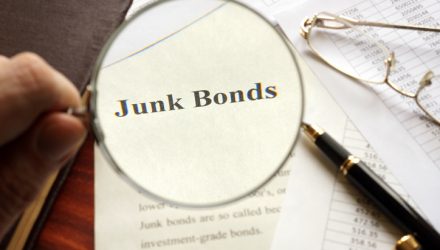The advantages of the low volatility investment factor are not confined to equities. For example, the IQ S&P High Yield Low Volatility Bond ETF (NYSEARCA: HYLV) can reduce some of the gyrations associated with junk bonds will keeping investors engaged with that high-yield asset class.
HYLV tracks the S&P U.S. High Yield Low Volatility Corporate Bond Index. That index “is designed to measure the performance of U.S. high yield corporate bonds with potentially low volatility. The index is comprised of bonds from the S&P U.S. High Yield Corporate Bond Index and is a modified market value weighted index with a 3% cap on any single issuer,” according to S&P Dow Jones.
There are some compelling reasons to consider HYLV, many of which are derived via its benchmark’s methodology.
“The index aims to deliver higher risk-adjusted returns than the underlying broad-based benchmark through mitigating uncompensated credit risk,” said S&P Dow Jones Indices in a recent note. “The back-tested index performance demonstrated the efficacy of the low volatility strategy, with reduced return volatility and drawdowns in stressed markets.”
Specifically, high-yield bonds, like their names suggest, provide opportunities for enhanced yields. Since 1994, the high yield bond market has exhibited an average spread of 509 basis points above Treasuries.
Sensitive Junk Bonds
Junk bonds are also sensitive to interest rate changes, meaning the Federal Reserve’s plans for lower rates should benefit the asset class. However, if the economy slows, credit spreads can widen, potentially hampering traditional high-yield debt strategies in the process.
Fortunately, HYLV’s underlying index has performed admirably during bouts of market turbulence, including stretches of widening credit spreads.
“During the Q4 2018 and early January 2019 sell-off, when the broad market high yield bond index OAS widened by 199 bps from trough to peak, the S&P U.S. High Yield Low Volatility Corporate Bond Index outperformed the broad-based S&P U.S. High Yield Corporate Bond Index by 1.2%, while the latter suffered a loss of 4.1%. Other periods of market stress are also included that point to the defensive nature of the S&P U.S. High Yield Low Volatility Index,” according to S&P Dow Jones Indices.
Related: Turning Defense Into Offense With High-Yield Bond ETF
Additional data confirm that HYLV’s index has been better over the past 11 months than traditional junk bond strategies.
“Cumulatively, the S&P U.S. High Yield Low Volatility Corporate Bond Index outperformed the broad-based universe by 1.75%, with positive performance during 7 out of the 11 months over the studied period. Most of the outperformance came from credit spread positioning, confirming that uncompensated credit risk mitigation could improve the performance of a low volatility strategy,” notes S&P.
For more on fixed income strategies, please visit our Fixed Income Channel.








